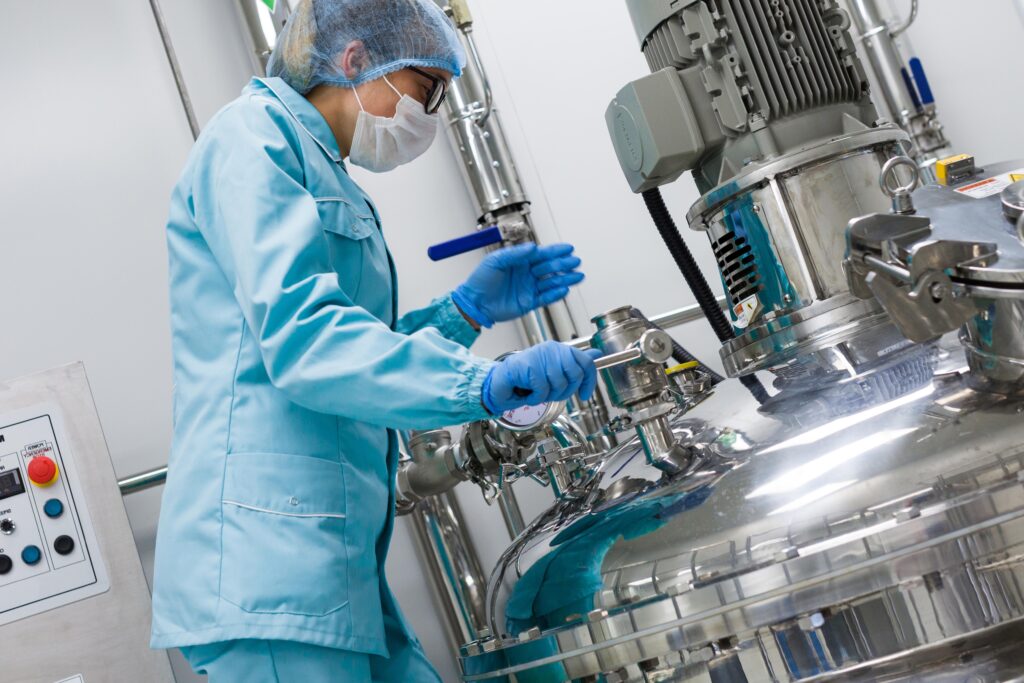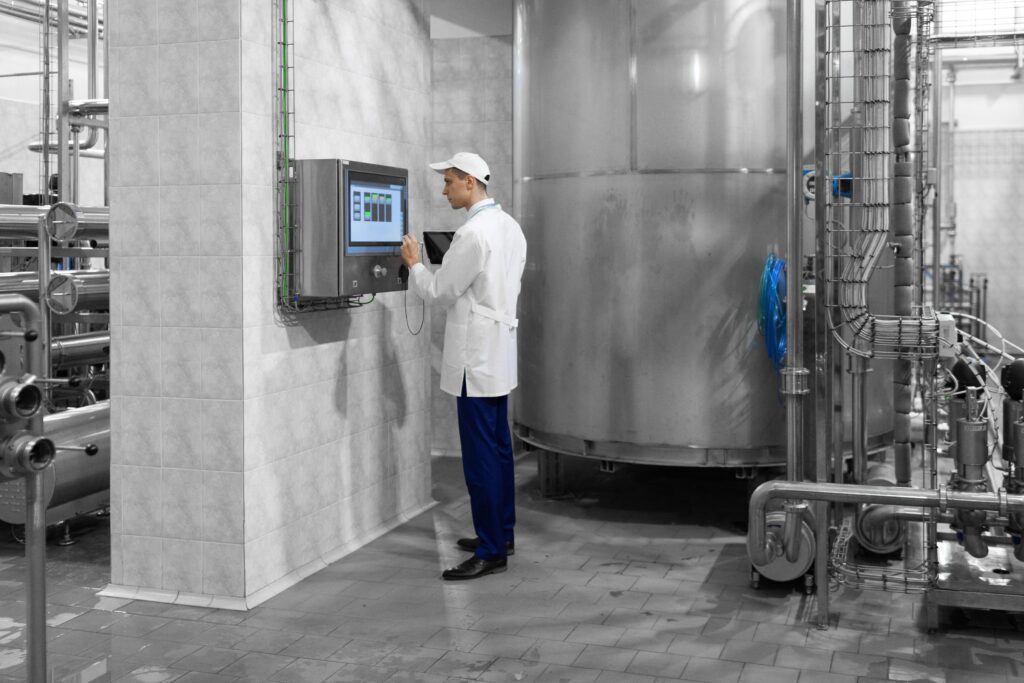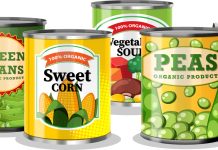 The Italian food sector is characterized by high energy consumption, which can be minimized by efficiency measures, concerning heat and electrical needs and technological processes along the various production lines.
The Italian food sector is characterized by high energy consumption, which can be minimized by efficiency measures, concerning heat and electrical needs and technological processes along the various production lines.
The food sector consumes a lot of energy, around 11% of industrial consumption (data from Annual Report on Energy efficiency of Enea 2018), partly because most companies are small to medium-sized, and in Europe only 1% of the sector’s companies can be classified as large companies.
The energy consumed by food companies is distributed equally between electricity, LPG and gas oil, placing the sector behind the mechanical, steel and chemical sectors in terms of energy consumption. The reduction in energy consumption in the food industry is lower than in other industries, making it an ideal candidate for efficiency measures. But the food industry comprises various sectors and, consequently, also different uses of energy, which vary considerably depending on the type of food, cultivation and processing techniques, and types of transport.
Energy consumption is influenced by the preparation of raw materials, their handling, the use of heat for processes such as cooking, pasteurization, sterilization, food cooling, end-of-line operations such as packaging and storage. Energy-efficiency solutions become essential, not only from the point of view of environmental sustainability, but also to cope with the expensive energy that exploded because of the Russia–Ukraine war.
Products that use less resources, such as energy, water, raw materials, plastics for packaging and have a low environmental footprint, are also increasingly appreciated by consumers. Food companies are focusing on sustainable supplies, energy diversification and the use of renewables, resource efficiency and emission reduction, packaging optimization, and proper management of end-of-life packaging. Efforts are focused on finding innovative solutions to reduce energy consumption and costs.
Uses of energy in food companies
It is estimated that the food industry consumes 30% of the world’s energy and generates 20% of greenhouse gas emissions. Food processing accounts for 28% of all energy used in the EU, while globally food processing and transport account for around 40% of energy needs. The main uses of process-related energy include the consumption of heat for the cooking of finished products or raw materials, heat treatments for stabilization and preservation, and the production of hot water and steam for cleaning operations.
Electricity consumption mainly concerns refrigeration plants, compressors and all machines involved in production and packaging. Before undertaking energy efficiency measures, the food business needs to know the specific consumption of its business. Timely consumption information for all equipment and processes allows the food company to identify any critical issues and evaluate the feasibility and cost-effectiveness of the various interventions.
Energy diagnosis
This is reflected in what is called the energy diagnosis, introduced in July 2014 with Legislative Decree 102/2014 and is mandatory for large and energy-hungry companies. However, it can be requested by any company that wants to know its consumption and perhaps implement energy-saving measures. The analysis is carried out by an authorized person, who can be an Energy Management Expert or a ESCo. The objective of an energy audit is to understand and evaluate the situation of the company from the point of view of energy consumption, to initiate energy efficiency and sustainability paths.
For this reason, an energy audit would also be beneficial for companies not required by law, in order to reduce energy expenditure, improve environmental sustainability and their competitiveness on the market, thanks to energy efficiency measures. During an energy audit, data are collected through on-site inspections and visits to verify the company’s organization and any energy-related issues, both of production lines and general services. Data are then processed by the professional in charge, who carries out a feasibility study to implement a monitoring system of energy consumption.
Results are also compared to those of similar companies on the market to evaluate the actual performance of the examined company. The main improvements in technology and management related to energy efficiency are then identified, assessing the technical feasibility and economic return, the possibility of obtaining TEE (White certificates) and contributions from calls for tenders. The energy audit also enables the company to plan the actions for the following years, in order to improve the energy performance and sustainability of its activities and products over time.

Energy efficiency interventions
In the food industry, the processes responsible for energy consumption vary from sector to sector. For some sectors, the most energy-intensive processes are pumps and fans, for others refrigeration, and for others mechanical processes such as grinding etc. Once the vulnerabilities and processes to be addressed have been identified, there are many solutions, because many technologies for reducing energy consumption are available on the market along the entire production chain.
Variable speed drives (drive or VSD) for the control of part-load applications are an example, to directly adjust the speed and torque of an engine. They can be applied, for example, to fans, pumps, compressors, extruders, conches, and conveyor belts. Variable speed drives ensure that the motor does not work more than it should, but according to the actual needs of the process, limiting energy waste and the need for oversize motors.
Variable speed drives, allowing precise control of the speed of the machine in question, ensure better control of the process, combined with energy savings in production of up to 25%. Using more efficient motors also has a clear positive result in terms of energy savings. Just think that every IE efficiency class (International Energy Efficiency Class), as defined by the international standard IEC 60034-30:2008, leads to a reduction in losses of up to 20%.
It is possible to operate on acceleration and deceleration systems of machines, such as centrifuges, without the kinetic energy being lost in the form of heat, thanks to regenerative drives, and to recover the energy in the form of electricity. Precise analysis of machine data, operating along the production line, can also contribute to energy efficiency, making it easier to predict plant downtime and to schedule maintenance interventions accurately. This makes it possible to limit machine wear, prevent system shutdowns at unsuitable times, and use the machines to their maximum efficiency.
The energy efficiency of food companies necessarily depends on the optimization of heating systems, used to produce hot water, steam or for cooling. In the production of ice-cream, meat, frozen food, and any food where low or very low temperatures are required, indirect cooling systems can be a solution. In fact, systems with a secondary circuit can reduce the refrigerant charge and use fluids with a lower environmental impact, such as ammonia.
The choice of a refrigerant, formulated with glycols (MEG, MPG), 1.3 propanediol, betaine etc., depends on the temperature required for the process, the operating and environmental conditions, and the operating pressures. These solutions have less impact on the environment because refrigerants with a lower environmental impact are used and consumption is reduced, because smaller pumps that consume less energy are required. Even greener plant-based refrigerants are available on the market, as the energy consumption and greenhouse gas emissions for their production are significantly lower than those of other refrigerants.
The adoption of Light Emitting Diode (LED) technology makes lighting systems more efficient and sustainable than traditional ones. They enable the food business to save energy and money, since low-power operation reduces operating costs accordingly, the long service life translated into lower maintenance costs, and the absence of toxic materials to be disposed of has a positive impact on the environmental impact. Steam generation is one of the most energy-intensive operations of food companies. The adoption of more modern heat generators certainly leads to increased efficiency, but that alone is not enough.
Power upgrading and energy efficiency solutions can be installed, such as thermal energy recovery economizers to preheat the boiler feed water and oxygen-controlled burners. The latter can be equipped with inverter technology, which further saves and reduces the emission of spent gases. The inverter, in fact, ensures that the required air flow is provided, without wasting energy and with lower energy costs. Capacitors can also be installed upstream or downstream of the economizer to recover heat at low temperature from the condensation of fumes, increasing efficiency.
Still with a view to saving energy and thus improving efficiency, it is important not only to equip oneself with the most modern steam generators, but also to monitor any losses, which result in high energy dissipation. Controls here focus on condensate dischargers and valves. Finally, cogeneration, i.e., the combined production of heat and electricity, and 3-generation, which combines the simultaneous production of electricity, heat, and refrigeration, are becoming one of the most popular solutions by food companies needing to improve energy efficiency. It can deliver savings of up to 40% in overall energy costs and a reduction in CO2 emissions.



